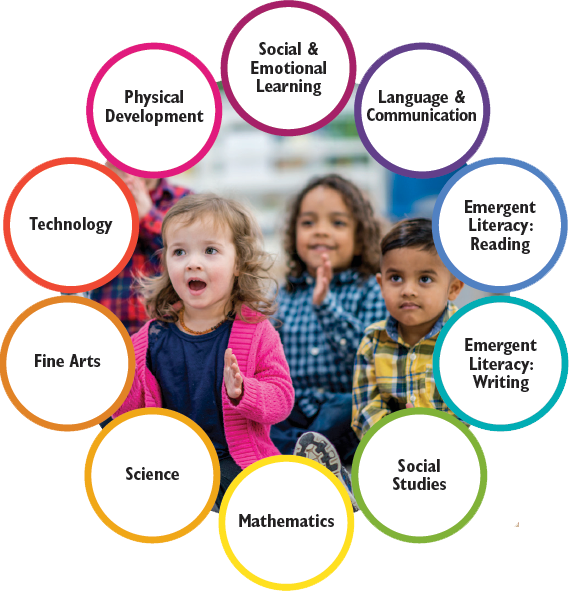

Comprehensive PreK Programs
Research-Based and Grounded in the Understanding of How Children Learn
Print + Digital | English & Spanish
Program Overview
New for 2022! Ready to Advance and Listos y adelante blend social-emotional development with academic learning through ten thematic units with interconnected topics that build domain-specific knowledge and early literacy skills over time.
BrochureBuilds and integrates knowledge across learning domains to prepare for Kindergarten.
All texts correspond to unit topics to build content knowledge and early literacy skills.

Informational and literary big books, lap books, small books, and student consumable books, plus authentic trade books, encompass unit-specific themes and characters.
Social-emotional learning and culturally responsive teaching blend into each lesson.

Exclusive SEL-focused music and videos, composed and performed by Grammy Award-winning 123 Andrés, are included in every unit.
Emergent writing resources respect all stages of writing (and pre-writing) development.

Directed drawings sequentially introduce each of the five pre-writing strokes, which can be used to create any geometric shape, and print any letter or number.
Designed specifically for today’s PreK classrooms and aligned to learning outcomes.
Learning progressions acknowledge how children develop socially and academically.

Regardless of native language, there is a progressive order to development that involves listening, speaking, reading, and writing.
Classroom management routines promote an environment conducive to learning.

Business Centers with Daily Schedules, Rotation Charts, and Job Charts establish order and nurture a positive learning environment that keeps children on track and eager to move forward.
Repeated exposures with spiraling reviews ensure success.

A carefully planned system of review and expansion of vocabulary and skills ensures that the learning “sticks.”
Promotes purposeful play to make learning memorable and fun, in school and at home.
Learning centers and activities encourage collaboration and decision-making.

Regardless of native language, there is a progressive order to development that involves listening, speaking, reading, and writing.
Multisensory tools engage students and offer hands-on learning experiences.

Manipulatives connect to math and science instruction while providing opportunities for children to practice fine motor skills and coordination.
Print and digital take-home resources foster strong school-home connections.

Take-home letters, activity calendars, videos, books, and more are available to engage students and caregivers, extending learning beyond the classroom.
